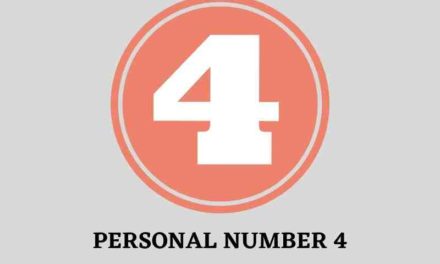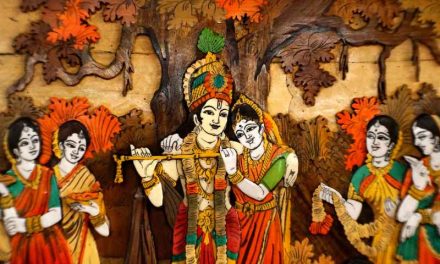The Pandya Kingdom became concerned after Malik’s victory against Veera Ballala III and the pillaging of Hindu shrines in Halebidu. Malik Kafur, on the other hand, became hesitant to continue his expedition farther south after hearing of the increased strength of the Pandyan army and its defensive posture behind the walls of Madurai.
After hearing about the wealth of Madurai from Veera Virupaksha Ballala, who had been sent to Delhi as an act of peace by his defeated father Veera Ballala III, it was Alauddin Khilji himself who gave the order to attack Madurai and sent reinforcements to Malik Kafur in order to carry out that order.
Sundara Pandyan, a devout adherent of the Saivite religious tradition, was incensed when he heard that Muslim soldiers had destroyed Hindu temples. He mustered his troops and devised a strategy to immediately set out on the road in order to engage the invading forces of the Delhi Sultanate.
However, Veera Pandyan disagreed with this proposition on the grounds that she believed adopting a defensive stance may prove to be more useful. Sundara Pandyan chose to disregard his instructions and instead gave the order for his army to move, leaving Vira Pandian in charge of protecting Madurai with the rest of his soldiers.
The Pandyan army was able to march all the way to Melaithirukattupalli without suffering any casualties. Their dependence on the river Kaveri as their primary supply of water, however, proved to be a fatal mistake when the river dried up during the scorching summer of 1311.
The already depleted army of the Pandyans intended to march in a westerly direction in the hopes of finding a nearby water source. The choice of the general to have them march on the dry beds of the River Kaveri caused a significant reduction in their rate of movement.
At Birdhul (also known as Virudhachalam), the army of Delhi discovered a group of around 20,000 Muslim troops who had defected from the Pandya army to join the army of Delhi. The generals of Delhi made the decision to spare their lives despite the fact that they were apostates and might have been executed for their actions.
On the other side, Malik Kafur’s soldiers strategically planned on their food and water supplies, and they came across Sundara Pandyan a significant amount of time before Thiruchirapalli. The Sultanate’s army quickly overpowered the physically fatigued Pandyan soldiers and won the battle.
On the other hand, the Pandyan cavalry continued their assault on the Delhi Sultanate horsemen. However, the cavaliers were well equipped with turcopoles and chain mail armors, but the Pandyan riders had inadequate armor and depended mainly on heavy swords.
Following the first assault by the infantry of the Delhi Sultanate, which was followed by strategic blows by Malik Kafur’s crossbowmen against the Pandyan cavalry, the Sundara Pandyan army was unable to withdraw in any direction.
The generals of Kafur’s army murdered all of the other prisoners they had seized and taken Sundara Pandyan as a hostage instead. Only a small number of Pandyan cavaliers were able to get away and report their loss to Veera Pandya in Madurai. The conquering Sultanate continued to pillage the temples of Thiruchirapalli and Thiruvarangam after their victories.
Only the troops under the command of Veera Pandyan remained within the fortified city of Madurai. Their one and only objective were to ensure the safety of the Meenakshi Sundareswarar Temple. Aware of the fact that they were vastly outnumbered, the defenders knew that their only chance of victory was to delay their opponents for a sufficient amount of time so that they could bargain.
The siege that Kafur placed on Madurai lasted for many weeks; however, it was ultimately fruitless since Kafur’s army did not possess any Ballistas or Trebuchets and instead depended on Battering Rams of a lower caliber.
On the other hand, the Delhi Sultanate infantry was subjected to a relentless barrage of arrow fire from Pandyan troops, as well as nighttime assaults by surprise horse formations that greatly increased the number of losses on Kafur’s side.
Malik Kafur was forced to retreat after suffering losses equivalent to almost half his army and being denied indemnification. Still, Veera Pandyan and his warriors were able to keep the line of defense intact, which forced Malik Kafur to concede and come to the table for negotiations.
In exchange, Veera Pandyan was given the assurance that his brother, Sundara Pandian, would be freed and that the deities housed inside the Meenakshi Temple’s inner sanctuary would be protected.
In addition, he pledged not to launch another invasion of the Pandyan Empire, a commitment that he faithfully upheld until the day he passed away in February 1316 AD. Because of this, Khusro Khan instead of him led the subsequent expedition to the Pandian Empire in 1314 AD for Alauddin Khilji.
The Malik Kafur was able to capitalize on the sibling rivalry that existed among the Pandya family, which ultimately led to their defeat in the war. Wassaf’s chronicles, which refer to Kulasekaran as Kales Dewar, indicate that he governed for forty years, and during that period neither a foreign adversary nor a serious illness confined him to bed. Wassaf’s stories assert this despite the fact that he ruled for an odd number of years.
As a kind of ransom, Veera Pandyan handed it up to Malik Kafur along with all of his elephants and horses so that Malik Kafur could release his brother Sundara Pandian from captivity. He also took notice of the fact that the Pandyan Empire was the wealthiest empire in the globe at that period of time.
Following this, the Khilji Sultanate sent out two more expeditions, one in the year 1314 AD led by Khusro Khan (later Sultan Nasir-ud-din), as was mentioned earlier, and the other in the year 1323 AD led by Ulugh Khan (later Sultan Muhammad bin Tughluq) under the command of Sultan Ghiyath al-Din Tughluq.
Both of these expeditions were under the command of Sultan Ghiyath al-Din Sayyid Jalal-ud-Din Ahsan was given the position of Governor of the Delhi sultanate’s southernmost Ma’bar province by Muhammad bin Tughluq. This province had just been established. Sayyid established the Madurai Sultanate and proclaimed his independence in the year 1333 A.D.
In 1378, the Vijayanagara Empire successfully invaded Madurai and installed Nayak rulers in place of the previous Sultanate. These Nayaks remained in power during the entrance of British soldiers in Madurai and continued to manage the city.
In point of fact, the Pandya regime’s lack of strength made it possible for the neighboring Chera king Ravivarman Kulasekhara (1299–1316/7 AD) Venad, Kerala, the Son-in-Law of Pandya monarch Maravarman Kulasekhara Pandian I (1268–1308 AD) to attack and destroy the Vira Pandian in 1313-14 AD.
In spite of the fact that he swore loyalty to Sundara Pandyan, the Chera administration in Madurai did not last long since the Sultanate Dynasty was quickly reinstated and went on to dominate for the subsequent 48 years.
The Pandyan administration, which had spread the empire across Orissa, Andhra Pradesh, and even Sri Lanka, was finally compelled to reign over tiny regions in Tenkasi, Tirunelveli, and Tuticorin. This was the end of the Pandyan dynasty (small districts in Tamil Nadu).
The Pandya people did not vanish following the collapse of their empire; rather, they remained to dominate a small region of southern Tamil Nadu centered on Tenkasi even though they were subject to the Vijaynagar Empire at the time. A few pieces of information about the most recent Pandyas have come to light.





